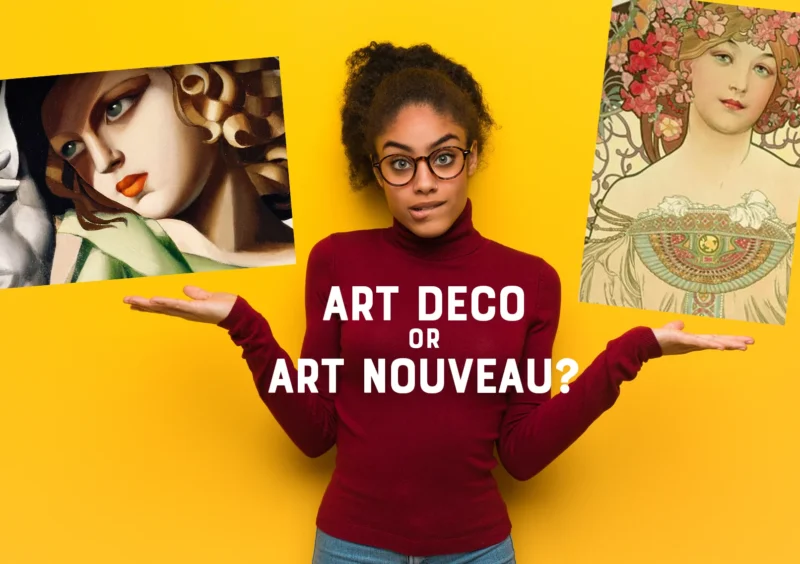In this article:
- Art Deco vs Art Nouveau
- Origins and Influences
- Stylistic Features and Characteristics
- Geographic and Temporal Differences
- Legacy and Longevity
- Summing It All Up
There are 3 big differences between Art Deco and Art Nouveau: inspiration, aesthetics, and timing.
Art Deco is influenced by industrialization and technology but Art Nouveau takes its inspiration from nature. Art Deco is rigid and geometric while Art Nouveau uses flowy, organic shapes. And Art Deco didn’t emerge until the 1920s while Art Nouveau originated in the late 1800s.
Now those are just the big, high-level contrasts. In this article, we’re going to uncover all the fascinating complexities and nuances behind these two monumentally influential design movements.
Art Deco vs Art Nouveau
Though their names sound quite similar, Art Deco and Art Nouveau are actually quite distinct in terms of their artistic styles and influences.
Both movements came about during rapidly changing times, when new technologies were emerging and age-old traditions were being questioned.
Today, we will explore some of the key differences between Art Deco vs Art Nouveau. Let’s dive in.
Origins and Influences
Every good design movement starts somewhere – and for both Art Nouveau and Art Deco, the origins tell us so much!

Get 300+ Fonts for FREE
Enter your email to download our 100% free "Font Lover's Bundle". For commercial & personal use. No royalties. No fees. No attribution. 100% free to use anywhere.
Art Nouveau Origins & Influences
Art Nouveau came about in the late 1800s as a reaction against another major shift happening in western culture: the Industrial Revolution and the mass production of goods.
Some artists and designers felt like machines were squeezing all of the creativity and craftsmanship out of society.
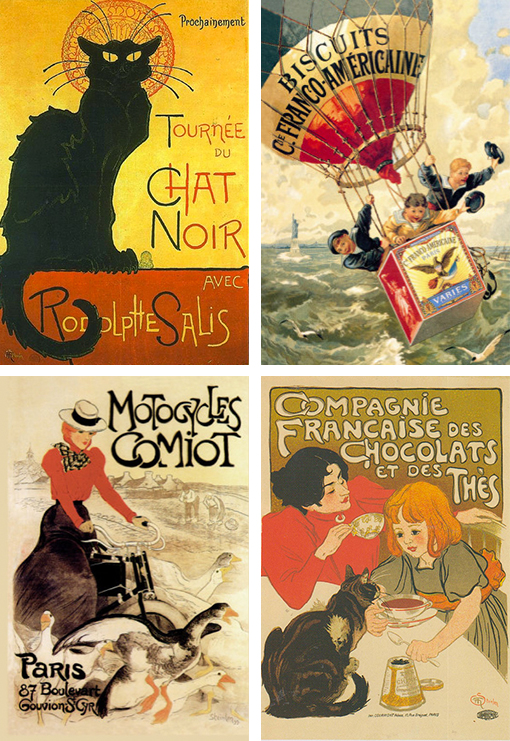
The Arts and Crafts movement in England especially tried to bring back handmade objects with intricate decorative details made from natural materials.
Art Nouveau took a lot of inspiration from the Arts and Crafts movement. You’ll see it referenced plants, flowers, insects and other organic shapes rather than the hard mechanical lines of factories and locomotives.
The sudden popularity of Japanese woodblock prints in Europe contributed beautiful curving lines and nature motifs as well. Bring all those together, and you’ve got the foundations of Art Nouveau!
Art Deco Origins & Influences
Art Deco emerged a few decades later, coming onto the cultural scene in Paris in the 1920s. If Art Nouveau reacted against industrialization, Art Deco embraced it fully.
The sleek geometry and visual rhythms used in Art Deco resonate with the technological innovations happening at the time – streamlined trains, ocean liners, airplanes and automobiles.

There’s also evidence that Art Deco designers were influenced by avant-garde art styles like Cubism, which employed geometric shapes and angles in very visually striking ways.
And we can’t forget that the discovery of King Tut’s tomb sparked a fascination with visual motifs and icons from ancient cultures like Egypt, Aztec civilization and Mayan temples. What an incredibly rich array of inspirations.
Stylistic Features and Characteristics
When you look at examples of Art Nouveau and Art Deco in art and design, the aesthetic differences are quite eye-catching. Here’s what you might see:
Style & Character of Art Nouveau
Art Nouveau has very fluid, curving lines and organic shapes. It embraces asymmetry and whiplash curves rather than strict geometry.
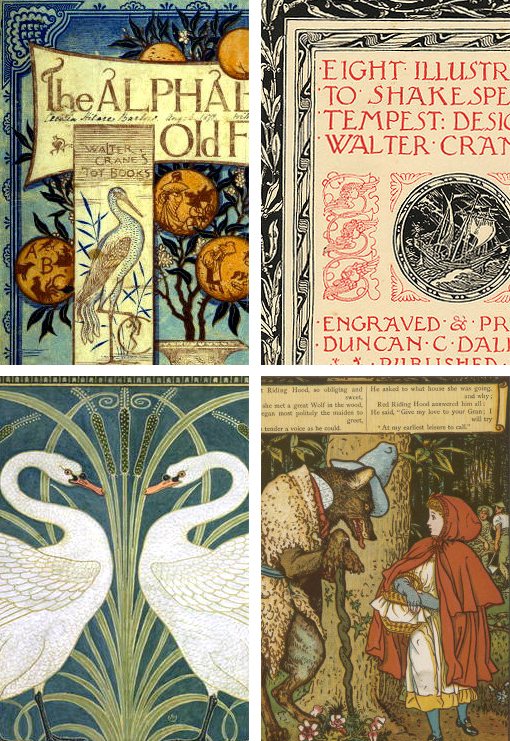
You’ll often see vines, flower motifs, insect wings integrated beautifully into the composition of paintings, posters, jewelry and more. The palette tends to use earthy, muted colors like olive greens, burnt oranges and mustard yellows.
Style & Character of Art Deco
Art Deco is all about sleek, streamlined forms, very angular and symmetrical. It has a slick, polished look and feel, using high-contrast colors and luxurious materials like chrome, glass, glossy wood veneers and lacquer.
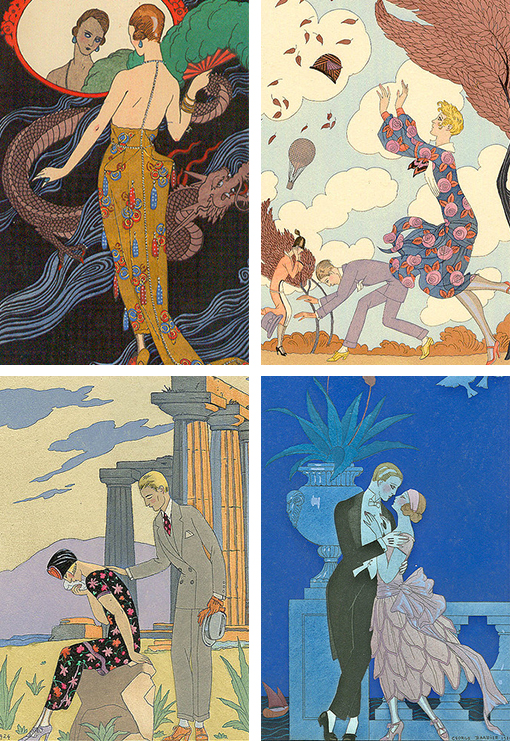
Recurring motifs include sunbursts, fountains, sphinxes and chevrons. It has a visual rhythm of verticals and diagonals that capture the “jazz age” excitement!
I always get a kick out of having students look at Art Nouveau and Art Deco pieces side by side.
The contrast is so sharp! Take in the sinuous curves of a Mucha poster, then check out sharp zigzags of early graphic design. What differences do you notice?
Geographic and Temporal Differences
Art Nouveau and Art Deco both ended up achieving international influence and made impressions across Europe and over in the United States.
But it’s important to note some key differences in terms of where each one originated and how timing played a role as well.
Origin of Art Nouveau
Art Nouveau’s early roots trace back to England and the Arts and Crafts movement happening in the late 1800s.
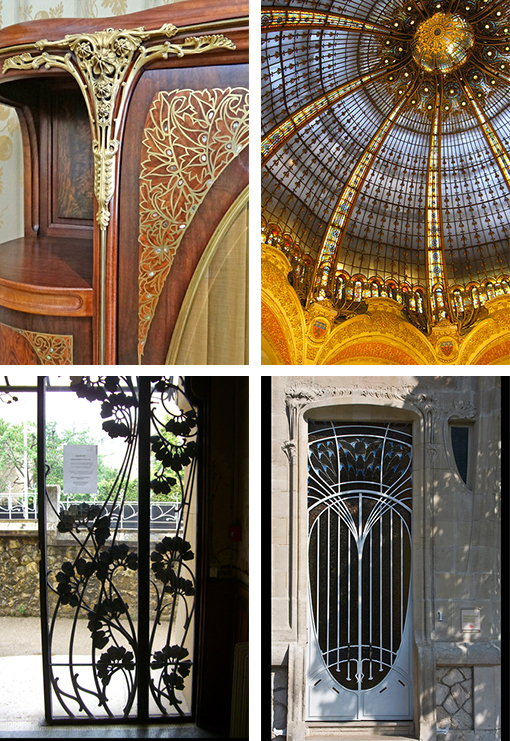
From there, the style spread to other parts of Western Europe, each country putting a bit of its own spin by incorporating local flora/fauna into the naturalistic motifs. New Art Nouveau architecture and design could be seen popping up in France, Germany and Spain.
Origin of Art Deco
Art Deco emerged a bit later, originating in Paris, France in the 1920s.
America enthusiastically embraced the style during this decade as well. The revitalized cultural energy and optimism during the “Roaring 20s” was a perfect match for the sleek looks of Art Deco in architecture, visual arts, fashion and beyond.
Some standout Art Deco landmarks from the era include New York’s Chrysler Building and the Empire State Building.
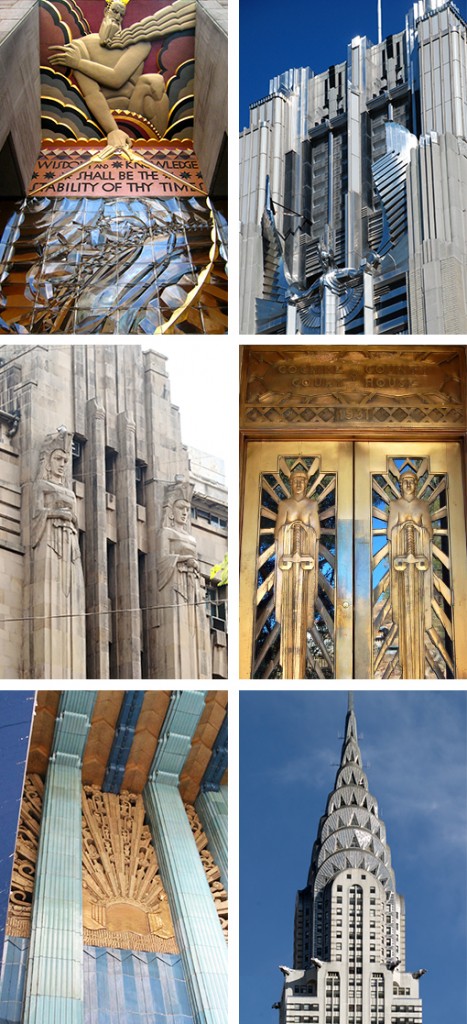
While overseas, Art Nouveau had already mostly faded out by World War I.
Art Deco carried the design torch later for another two decades until Art Moderne and International Style took center stage after World War II.
As you can see, the timeline and place each one held on the world stage differed – but both movements made an undeniable impact in their peak eras.
Legacy and Longevity
The importance of these two movements extends far beyond just buildings and visual art – their legacies of design innovation reached across media and still impact contemporary aesthetics.
Art Nouveau’s Legacy
During its heyday, Art Nouveau made waves not only in fine art painting and sculpture but graphic design, furniture, glasswork, ceramics, metalwork, and jewelry.
Artists, artisans and designers found creative new ways to incorporate flowing organic motifs and Craftsman details in utilitarian and decorative objects.
Art Deco’s Legacy
Art Deco also spread rapidly from the fine arts into the spectrum of decorative and applied arts during the 1920s-30s.
Its distinct sleek geometric forms took center stage in furniture, carpets, fashion design, machinery, cars, ceramics and more.
Specialized design schools popped up to meet demand for talent in industrial design using new materials.
Both Art Nouveau and Art Deco ultimately transcended the usual boundaries between pure arts and craft.
They fused aesthetics with a wide range of functions for everyday people. Architecture and interior spaces also increasingly reflected each style – from Art Nouveau metro station entrances to Art Deco skyscrapers and movie palaces.
Longevity
As far as longevity, Art Nouveau fell out of fashion more quickly in the early 1900s when World War I shook up the art world.
Art Deco retained its popularity another two decades until World War II. After fading, both later gained renewed admirers in the 60s/70s among artists and historians reevaluating decorative late 19th/early 20th century styles.
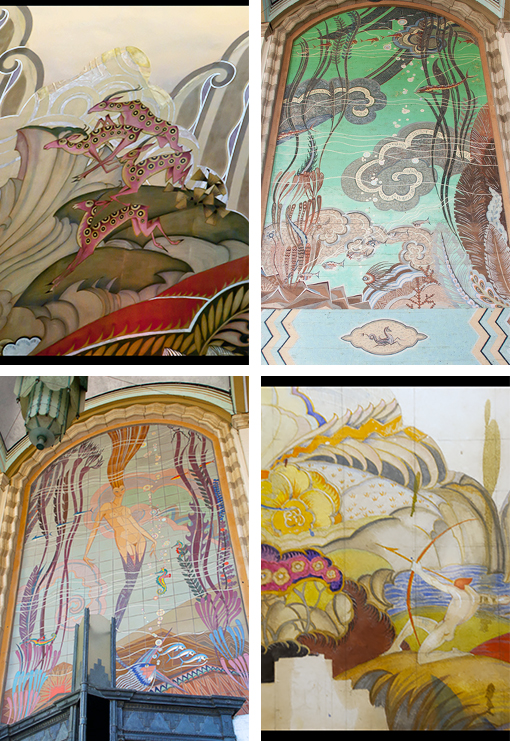
So whether it’s in hearkening back to handcraft or machine precision, nature or technology – these movements make their mark across time in design.
Their core aesthetic spirits still ripple through and revive periodically today.
Summing It All Up
We really covered so much fascinating material today! Now that we’ve explored the origins, peak periods, aesthetics, and influences of Art Nouveau and Art Deco, let’s reconnect to some key takeaways.
While the two styles sound similar in name, they emerged in different eras. Art Nouveau has more fluid, asymmetric naturalist forms, originating from late 1800s Arts and Crafts and Japanese woodblock prints. It was at its peak across Europe for about two decades leading up to World War I.
Art Deco arose later – a sleek, stylized reflection of the machine age. Its graphic geometric style connected to early modern art movements like Cubism and drew inspiration from rediscovered ancient cultures. Art Deco was especially popular internationally from the 1920s into the early stages of World War II.
Beyond visual contrasts, both Art Nouveau and Art Deco broke from academic tradition and had ambitions to be truly “total” art forms not limited to one medium. As we explored, that zeal extended their imprint across a vast range of decorative arts and design disciplines that are still influential today.
What key facts or visual connections made the strongest impression on you today? I hope getting to go in-depth on these movements has inspired your own appreciation and analysis skills further! Knowledge of our creative past guides how we shape the aesthetics of tomorrow.

